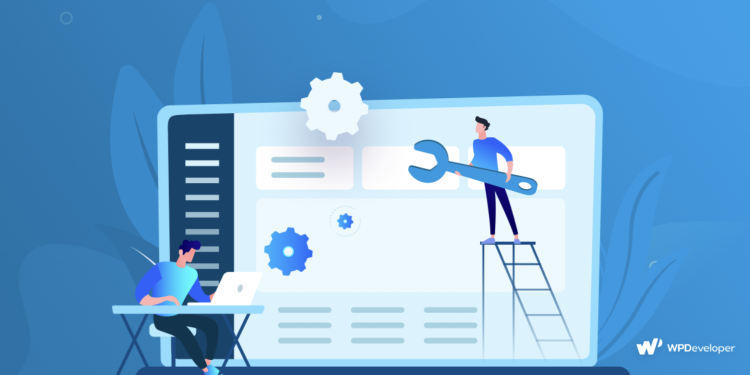Wondering how to become a WordPress plugin developer? WordPress powers more than 25% of the world’s websites. This is because WordPress is a CMS (Content Management System) that’s easy to use, and also because there are so many plugins available to extend its functionality. In this post, we cover everything you need to know about becoming a WordPress plugin developer. You will learn about the different types of plugins, what exactly are APIs, what are some example plugins, and most importantly how you can become a plugin developer and get your first job in this field.
What Is A WordPress Plugin?
A WordPress plugin is a piece of software that extends the functionality of a WordPress website or blog. The plugin architecture of WordPress allows anyone to extend the functionality of a website without any prior knowledge of web development. These plugins are used by millions of people every day. Plugins are pieces of code that add functionality to a WordPress website. This can be anything from advertising to analytics, or an online store. You can find thousands of plugins online for free, paid or for hire. They can be installed on one website or thousands of websites at once with just a few clicks. They can also be disabled or removed just as easily.
Types of WordPress Plugins
There are different types of plugins that you can build. However, they are mainly divided into two categories: The Frontend and The Backend.
The Frontend deals with the website as a user.
The Backend deals with the WordPress internals – like posts, pages, categories etc.
The Frontend plugins are mainly focused on user experience. They deal with what the users will see and how they will interact with the website. Most modern plugins use React.js in the front end like Quill Forms( the Typeform alternative plugin).
Examples of these types of plugins include:
– Themes: The WordPress themes are what the user sees and interacts with.
– WYSIWYG (What You See Is What You Get) editors: These allow users to write posts without having any knowledge of coding.
– WordPress quiz plugins: These help the user create and edit forms with ease. This type of plugin contains a massive front end and massive back end as well. The same applies for any WordPress survey plugin.
– Image editing: These plugins allow the user to edit images with little or no knowledge of image editing. Backend Plugins
– The Backend plugins deal with the WordPress internals. They help with things like SEO, site speed, etc. There are many more plugins available for the backend – examples include:
– SEO: SEO plugins let you optimize your WordPress site for search engines like RankMath SEO.
– Speed: These plugins help you speed up your WordPress website.
– Security: These plugins help make your WordPress site more secure.
WordPress API (Application Programming Interface)
An API (Application Programming Interface) allows two software applications to communicate with each other. The WordPress API allows 3rd party developers to create their own plugins using the same code used in the core WordPress application. This is why WordPress is so flexible – because anyone can build functionality on top of it. The main goal of the API is to allow 3rd party developers to create functionality that is compatible with the WordPress core code. The API also allows third-party developers to extend the functionality of the core WordPress application.
WordPress Core APIs
There are many core APIs that are available in WordPress. However, one of the most widely used and important is the Posts API. This is the core WordPress functionality that lets you create, edit, and delete posts. Another core API is the Comments API. This lets you create, edit, and delete comments on posts. A few other widely used APIs are the terms and conditions, and the Privacy Policy. These APIs help you create and edit your terms and conditions, and your privacy policy. There are many other core APIs available in WordPress. You can learn more about WordPress APIs here and here.
WP-CLI: Becoming a Command Line Plugin Developer
WP-CLI is an open source tool that lets you use the WordPress core functionality from the command line. This means that you can build plugins or extensions for WordPress without the need for a user interface. This means that you can build plugins that have no user interface. This can be very helpful in situations when you need to create a plugin that adds functionality to an existing site. If you want to become a command line plugin developer, you will need to learn how to use WP-CLI. This often comes with a steep learning curve. However, once you get the hang of it, you can create powerful tools in no time.
How to Become a WordPress Plugin Developer – Conclusion
Plugins are a very useful part of a WordPress website. They allow you to add new functionality, or extend the functionality of a WordPress website without any prior knowledge of programming.
There are two main types of WordPress plugins: frontend and backend. Frontend plugins are mainly focused on what the user will see, and backend plugins deal with the WordPress core functionality.
WordPress also has core APIs that are used by plugins. One of the most widely used APIs is the Posts API, which lets you create, edit and delete posts. If you want to become a WordPress plugin developer, you will need to learn how to use the WordPress API, and use it to create plugins.







